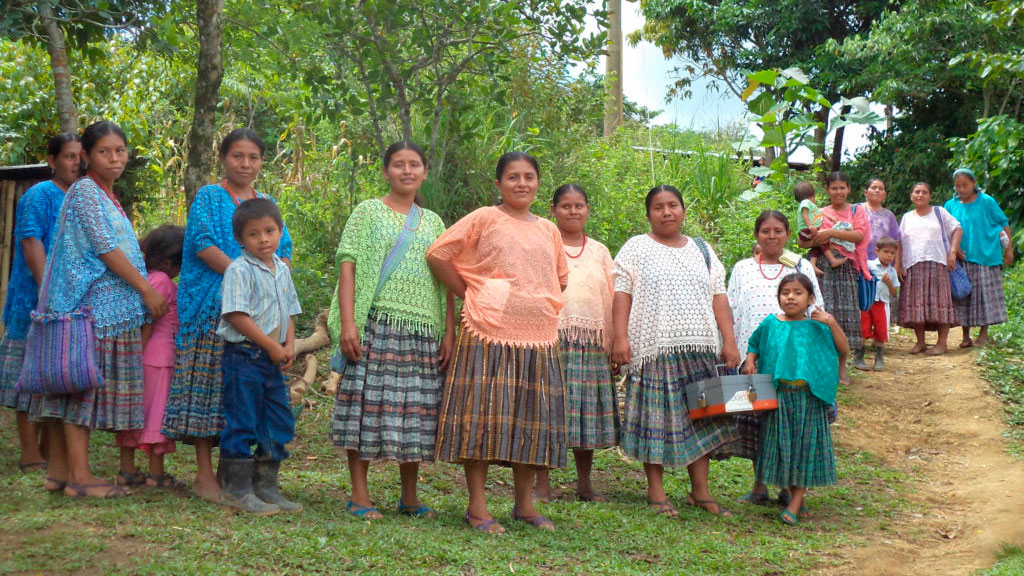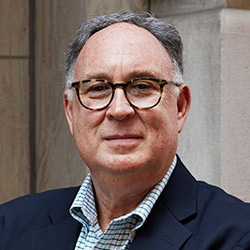Beyond the Rhetoric
“Build the wall,” “the caravan,” “immigration reform,” “asylum-seekers” have become phrases that fill US airwaves and social media. We’ve heard the tragic stories of family separations, Guatemalan children dying while in US Customs and Border Protection facilities, and families engaging in arduous and treacherous journeys from their homes to the US border in hope of a better life.
To go beyond the rhetoric, we wanted to look for root causes and understand why families are taking such a desperate step to leave their homes and risk entry to the United States. So we turned to Jorge Coy, Trickle Up’s Americas Regional Representative. Jorge is a development expert who established Trickle Up’s Guatemala office in 2008. He is also a professor at the Rafael Landivar University and the University of San Carlos in Guatemala and has worked for several local and international development NGOs in Guatemala.
Insecurity, Violence, & Weak Institutions
The region is facing unparalleled levels of violent crime, with El Salvador and Honduras ranking among the top five most violent countries in the world. “The number one reason they are migrating is lack of security in their home countries. San Pedro Sula, El Progresso – these are points on our map that are totally insecure,” Jorge explained. In 2017, Guatemala City had 53 homicides per 100,000 residents, the 24th highest murder rate in the world and the second highest in the region behind San Salvador.
The nature of the violence is distinct in each country, but the proliferation of gangs, narcotics trafficking, weak rule of law, and official corruption are common features. Criminal groups in the region include transnational criminal organizations associated with Mexican drug-trafficking organizations, domestic organized-crime groups, and transnational gangs such as MS-13 and M-18, which are estimated to have 85,000 members combined.
Many rural areas lack the presence of a real government creating a vacuum that allows drug traffickers to install themselves and create an illegal economy. Families who live on land that is valuable to traffickers are often forced to sell their homes and flee. However, others choose to remain under the new rules and unofficial governing structures established by the drug dealers. This is often the case in Alta Verapaz and the northern region of Guatemala, Jorge noted. “Many are better off now than they were with the government that did not provide them any attention. They have employment, even if it’s totally illegal.”
Weak, underfunded government institutions, combined with corruption, undermine efforts to address gang violence and extortion. Tax revenues as a percentage of gross domestic product (GDP) in the region are among the lowest in Latin America, exacerbating inequality and straining public services. Those who choose the illegal economy are doing so due to a lack of legitimate alternatives.
“From an economic perspective, we must create more opportunities for employment,” Jorge said. “Living conditions have definitely deteriorated.”
“They want to improve their lives,” Jorge said. “The United States represents the hope that they have of a better land and a better life.”
Poverty
Over half of Guatemalans live in poverty with 23 percent in extreme poverty and rural employment is primarily in the volatile agricultural sector. Poor harvests, drought, and the devastating effects of “coffee rust” and other agricultural pests on the coffee industry, which employs large numbers, are speeding up an exodus of families from villages bereft of food. Overall, food insecurity may be a more important factor in migration than violence. A 2017 report led by the World Food Programme found a clear link between food insecurity in the “Dry Corridor” of the region and migration.
Guatemala is among the most vulnerable countries to natural disasters and the effects of climate change. For sustenance farmers, erratic weather can be devastating in only a few months. “The drought is making life even more difficult for the extremely poor,” Jorge said. Large increases in the number of Guatemalan migrants intercepted at the US border since 2014 coincides with El Niño-related drought conditions in the region.
The challenge is how to drive positive change in these difficult circumstances. The answer, Jorge said, is in creating opportunities. “Families that think of migrating—they are not all focused on the United States or even international immigration per se. They simply are looking for more opportunities elsewhere, wherever that may be.”
Political & Economic Exclusion
Jorge emphasizes that any progress in Guatemala lies not only in job creation, but also in political and social changes that increase inclusion and equality for workers. “Wealth is being concentrated and the poor are totally excluded from this economic model. They are totally unattended by the government. We must create a new governing model that includes all those who are now excluded, including the poor. In order to decrease inequality, the conditions of employment must also improve.”
The United States is Guatemala’s most significant economic partner and accounts for over 40% of Guatemala’s trade. Over 200 US and foreign firms operate in Guatemala as part of the U.S. Dominican Republic-Central America Free Trade Agreement (CAFTA-DR). But, according to Jorge, these corporate relationships often lack social responsibility: “Sometimes more investment does not mean more employment. More must be done to establish straight forward and clear rules.” While Guatemala’s economy continues to grow, the wealth remains centralized and the poor are left behind.
“We are witnessing a decrease in the middle class. It is 16% of the population, but there is a fear that there will be no middle class. We will only have the rich and the poor. That is a very dark outlook,” said Jorge.
Creating Opportunities
To alleviate the pressure of mass migration, it is essential to address these underlying factors driving people from their homes. In December 2018, Mexican President Andres Manuel Lopez Obrador introduced a $30 billion investment initiative colloquially labeled the “Marshall Plan” for Central America to combat the root causes of migration. The United States signaled support for the plan and commitment of $5.8 billion, albeit most of which was already previously allocated to the region.
Improving security and ensuring equal political, social, and economic opportunities in the region are essential in reducing migration, according to Jorge. “Guatemalans all want a better country,” he said. “But we also have hopes and want to work to make an improvement in our personal lives. Many see that hope in the United States.”



